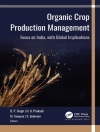This book brings together and discusses information relating to animal production systems in different parts of the world. Throughout this book there are examples of systems comprised of a collection of interdependent and interactive elements that act together to accomplish a desired outcome. As indicated in the Preface, editors sought to give a broad description of existing systems of livestock production in different parts of the world. They discuss some of their important components and try to identify why and how these components have interacted with the systems being described. By editorial concept and by cross-referencing between chapters. this book should serve as a synthesis of several key issues. Along with the extensive bibliography (some in languages other than English) here, and in each other chapters, we present an approach to global livestock production that is up to date and comprehensive. The editors have commissioned writers from Asia, Africa, Australia, the Americas and Europe. The information they present helps our understanding of the complexity of the issues faced in the rapidly changing world in which we all live. What to do about burgeoning populations, rising living standards, shrinking areas of agricultural and pastoral lands, dilemmas about the morality of eating meat, competition for arable lands to grow food crops for humans or to provide fodder and grain for livestock have not yet been resolved. The book’s purpose is to provide the reader with a synoptic overview of the role of livestock in the economy and culture of peoples from every continent except Antarctica. This book draws together many aspects related to livestock industries around the world, beginning with an overview of the major production systems. Different geographic zones are associated with certain production systems. These are explained and a more in-depth examination (including case studies) of each is presented. Livestock production is the world’s largest user of land, either directly through grazing or indirectly through consumption of fodder and feed grains. Globally, livestock production currently accounts for some 36 percent of the gross value of agricultural production. In the developed countries, this share amounts to half of total production and in developing countries for almost one-third. Worldwide, animal production from livestock (meat, dairy products, eggs, fiber and hides and skins) is the basis of livelihoods of billions of people. The management (care and welfare) of livestock is called animal husbandry. Animal husbandry as a term covers matters relating to livestock production and management, physiology of animals, reproduction, preservation and protection from disease, nutrition and feeding, housing, welfare and behaviour. The predominant production systems in the world range from extensive pastoral systems to intensive landless systems. The classification is justified by its usefulness in identifying livestock development possibilities. Systems at different stages on the development path face widely differing constraints on their further improvement. This book is particularly valuable in this context. The book has 17 chapters in five parts. The authors are drawn from 12 countries, many from the developing world. They are people with in-depth knowledge of the local situation and provide insights into the role, function and interdependence of people and their livestock. The book will be an invaluable addition to the already comprehensive technical literature on the physiology, behaviour, and genetics of both ruminant and non-ruminant livestock (including poultry, rabbits, and even more exotic "mini livestock" species that are part of the food chain. Readership will include livestock specialists who wish to learn more about the global situation, personnel from the donor community, the UN agencies, NGOs, geographers and the curious lay persons.
Victor Roy Squires
Livestock: Production, Management Strategies and Challenges [PDF ebook]
Livestock: Production, Management Strategies and Challenges [PDF ebook]
Acquista questo ebook e ricevine 1 in più GRATIS!
Lingua Inglese ● Formato PDF ● Pagine 503 ● ISBN 9781536155419 ● Editore Victor Roy Squires ● Casa editrice Nova Science Publishers, Inc. ● Pubblicato 2019 ● Scaricabile 3 volte ● Moneta EUR ● ID 8419949 ● Protezione dalla copia Adobe DRM
Richiede un lettore di ebook compatibile con DRM












